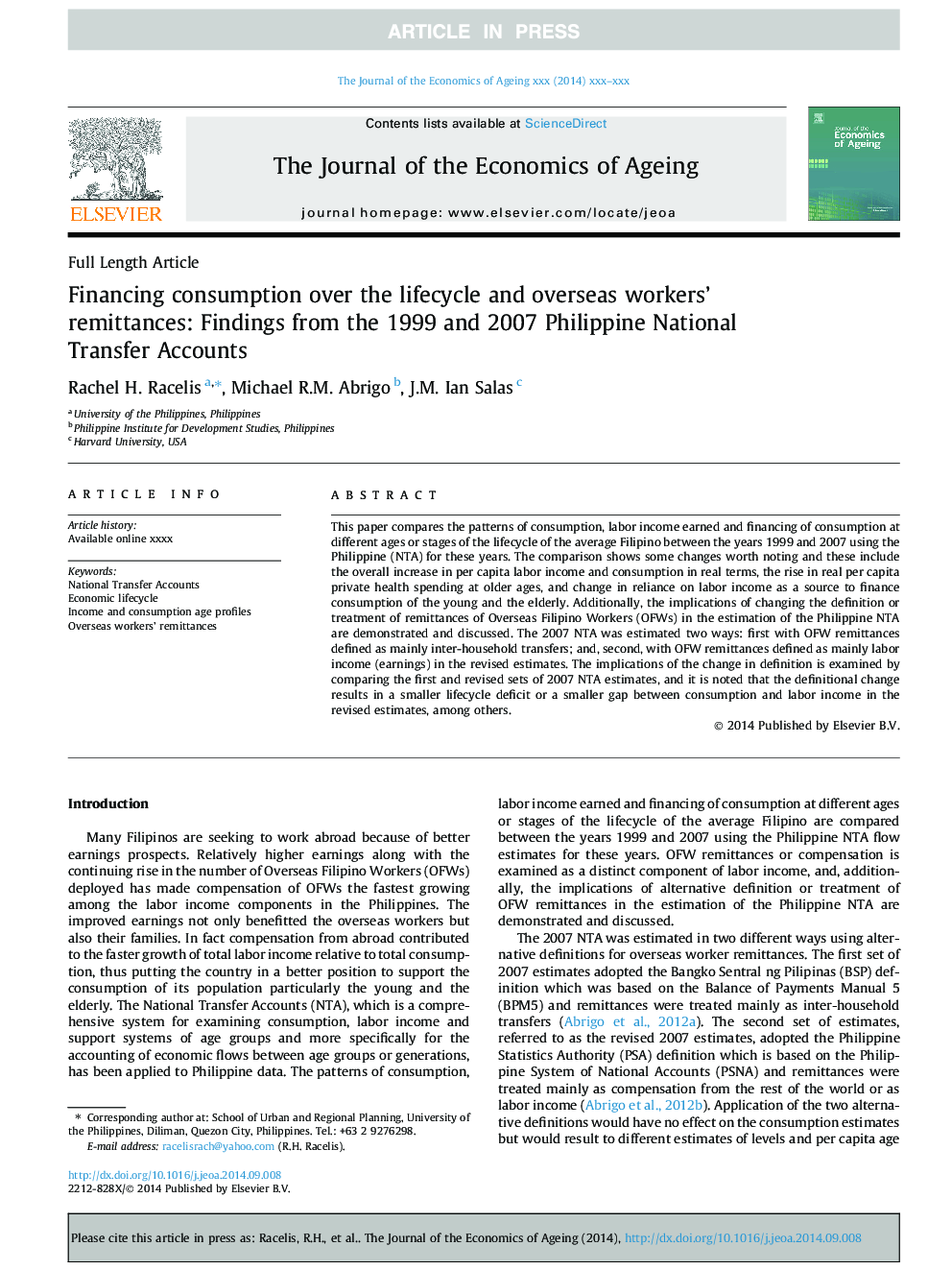| Article ID | Journal | Published Year | Pages | File Type |
|---|---|---|---|---|
| 7360051 | The Journal of the Economics of Ageing | 2015 | 10 Pages |
Abstract
This paper compares the patterns of consumption, labor income earned and financing of consumption at different ages or stages of the lifecycle of the average Filipino between the years 1999 and 2007 using the Philippine (NTA) for these years. The comparison shows some changes worth noting and these include the overall increase in per capita labor income and consumption in real terms, the rise in real per capita private health spending at older ages, and change in reliance on labor income as a source to finance consumption of the young and the elderly. Additionally, the implications of changing the definition or treatment of remittances of Overseas Filipino Workers (OFWs) in the estimation of the Philippine NTA are demonstrated and discussed. The 2007 NTA was estimated two ways: first with OFW remittances defined as mainly inter-household transfers; and, second, with OFW remittances defined as mainly labor income (earnings) in the revised estimates. The implications of the change in definition is examined by comparing the first and revised sets of 2007 NTA estimates, and it is noted that the definitional change results in a smaller lifecycle deficit or a smaller gap between consumption and labor income in the revised estimates, among others.
Keywords
Related Topics
Social Sciences and Humanities
Economics, Econometrics and Finance
Economics and Econometrics
Authors
Rachel H. Racelis, Michael R.M. Abrigo, J.M. Ian Salas,
